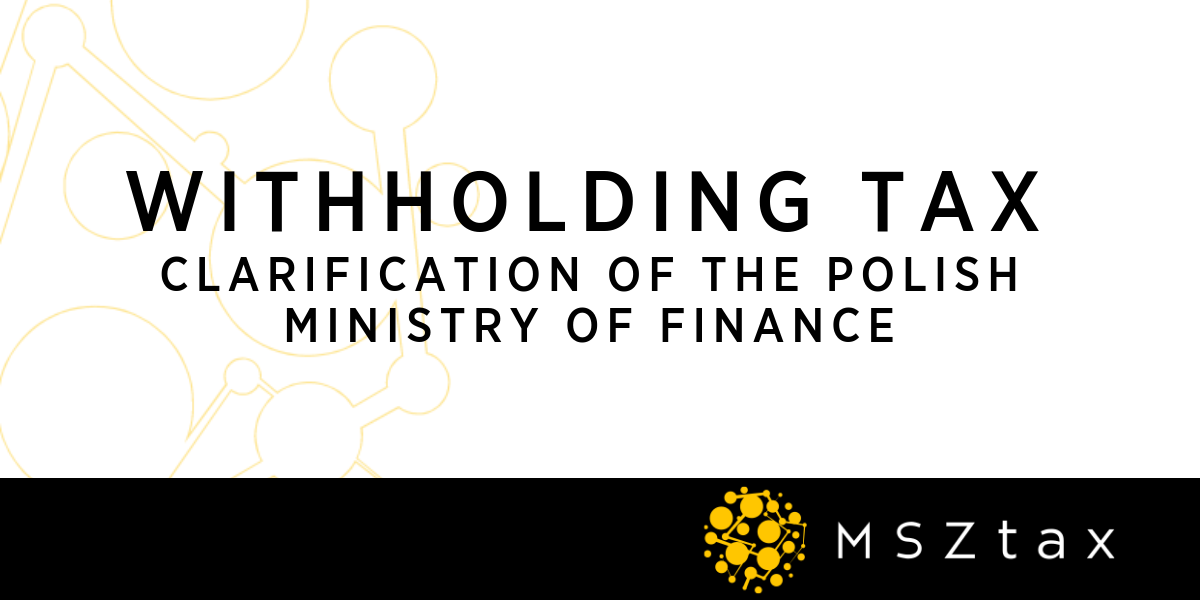The rules of taxation of so-called commercial properties, or buildings for rent or for use under another similar contract (e.g. a lease) in Poland, have changed significantly since 1 January 2019. What also changes is the name of the tax. The commercial property tax has a new name – a tax on income from buildings. Apart from the name, the scope of the tax has also changed to a large degree. It covers a considerably wider circle of property owners than before due to the fact of covering all buildings, regardless of their nature, whenever their value exceeds the statutory minimum amount.
Why the commercial building tax rules has been amended?
The regulations governing the so-called minimum income tax on commercial properties gave rise to serious doubts about their consistency with EU law. The reason for all this was that the tax covered some categories of buildings only. These included buildings classified as a shopping centre, department store, standalone shop and boutique, other retail building or office building. Therefore, under previous regulations, being subject to the commercial property tax was determined not by the manner of use of the property but by its nature and classification. For this reason, the just-introduced tax became the subject of proceedings before the European Commission and alleged to be a prohibited state aid due to its peculiar scope of application. This in turn forced changes to national law, which came into force on 1 January 2019.
What are the keys information on the new rules of taxation of commercial buildings?
The amended regulations focus around several main objectives, such as:
-
for the commercial property tax to apply only to buildings offered for use under a rental, lease or leasing contract, etc.;
-
for the commercial property tax to apply to all buildings offered for use (not only to certain categories);
-
to abolish the PLN 10,000,000 threshold for the initial value of a building, above which the building is generally subject to the tax;
-
to introduce a tax-free amount of PLN 10,000,000 for a taxpayer (and not one building!);
-
to introduce a special clause against tax evasion, to apply only to the commercial property tax;
-
to change the name of the tax to “tax on income from buildings”.
Tax on income from buildings: Tax rate, tax base and payment
The tax rate is 0.035% of the tax base per month (0.42% per year).
The tax base is the income, or the initial value of the taxable asset arising from the records kept, determined as at the first day of each month.
The foregoing means that to calculate the tax on income from buildings, taxpayers must multiply the tax rate by the initial value of the building determined as at the first day of each month.
Importantly, what is relevant for the purposes of the tax on income from buildings is the initial value of buildings stated in fixed asset records kept by the taxpayer for tax, and not accounting, purposes. Taxpayers must also note that the initial value of the fixed asset should be determined without any depreciation deducted but including any improvements and separation of components. This means that the value may change throughout the year, which should be taken into account in calculating the tax.
Regarding the payment manner, taxpayers are obliged to calculate the tax on income from buildings for each month and pay it to the account of the tax office by the 20th day of the month following the month for which the tax is paid.
What buildings are subject to the commercial property tax in Poland?
From 2019 the tax covers a much greater number of buildings, as it will apply to all buildings (both residential and non-residential) which meet specific criteria, i.e.:
– are located in Poland;
– are owned or jointly owned by the taxpayer;
– have been let for use, in whole or in part, under a rental, lease, leasing or similar contract;
– are a business-related asset;
– their total usable floor area let for use exceeds 5% of the total usable floor area of the building.
What is the new threshold of the value of commercial property?
The change that contributed to the fact that the tax applies to a much greater number of business owners now, being of the greatest practical importance to taxpayers, is the change to the application of the PLN 10,000,000 threshold. The amount used to be the value below which a building was not subject to the tax. Therefore, if a taxpayer owned several properties in 2018, this value would refer to each building individually. If none of the buildings had a value exceeding PLN 10,000,000, the tax was not due.
From 1 January 2019 the threshold is applied in a completely different manner. It does not refer to a specific building but is calculated as a total for all buildings owned by a given taxpayer. This means that the tax is currently due where a specific property has a value exceeding PLN 10,000,000 or where the total value of several properties exceeds PLN 10,000,000. The amount is also a kind of tax-free amount, reducing the tax base in the case of properties with a value exceeding PLN 10,000,000.
Example: Until 1 January 2019 an owner of three buildings with an initial value of PLN 8,000,000 each did not have to pay the tax due to the fact that the tax applied to properties with a value exceeding PLN 10,000,000. From 1 January 2019 the owner will have to pay the tax due to the fact that the total value of their properties exceeds PLN 10,000,000.
This change will therefore most affect taxpayers who own many properties that were not subject to the tax before because of their low value. They may be subject to it now, given that the value of properties adds up.
How to claim back tax on income from buildings (commercial property tax)?
Similarly as before, the amount of the tax on income from buildings paid for a given month is deducted by taxpayers from their advance income tax payment. Taxpayers may also not pay the tax on income from buildings, provided that it is lower than the advance tax payment. In turn, the amount of tax on income from buildings paid and not deducted in the tax year is deducted from tax at the time of filing the tax return.
The tax on income from buildings not deducted during the tax year or in the tax return is refundable. The refund is made only if claimed by the taxpayer and if the tax authority does not find any irregularities in the amount of the tax liability or loss in the tax return filed and in the tax on income from buildings. The lack of irregularities as understood by the authorities are in particular situations where debt financing costs incurred in connection with building acquisition or construction, as well as other income and costs, were determined on an arm’s length basis. This in turn requires verification of whether the terms agreed actually reflect arm’s length terms, which is of substantial importance in the case of related parties and should be particularly noted.
The commercial property tax – or the tax on income from buildings – will no doubt negatively affect the situation of all those who are professionally involved with properties.
***
If you have any questions about the tax on income from buildings, email me or leave a comment!
If you wish to learn more about tax system in Poland, you can read my other articles:
WITHHOLDING TAX IN POLAND – CHANGES IN 2019
TAX ON SALE OF REAL ESTATE IN POLAND
[ssba-buttons]



